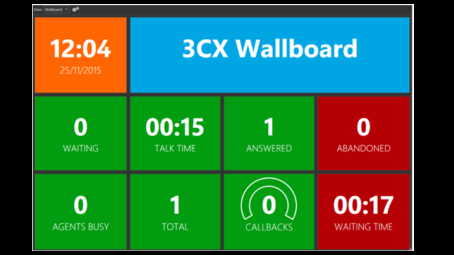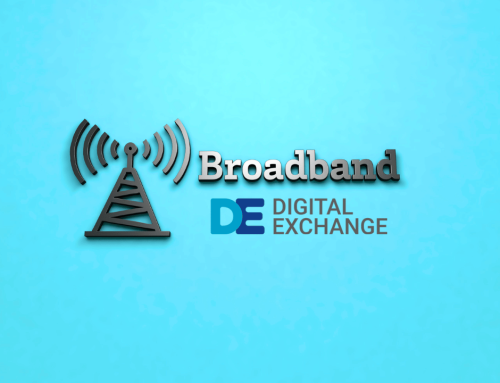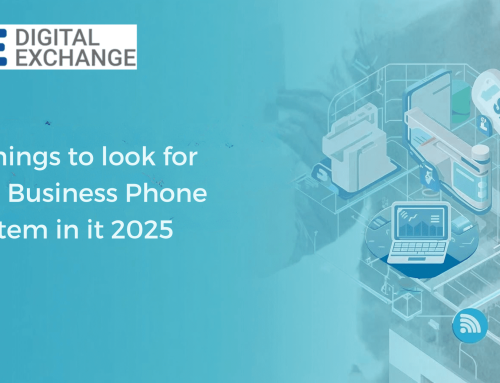What is call Analytics?
What is call analytics? Even in today’s digital era, every business still needs to make and receive telephone calls. More than 60% of people still prefer to contact a business via telephone rather than any other method. With this in mind, how do you track the number of calls received into your organisation/business and made out of your organisation/business. To make sure that you are staying on track with existing customers and potential new business? You do it with some form of call analytics.
By leveraging call analytics and analytics data, companies can make data-driven decisions that lead to better customer experiences and more effective marketing efforts. This powerful tool allows businesses to identify areas for improvement and develop targeted strategies that drive growth and revenue. Integrating call analytics data into systems like Google Ads, Google Analytics, and Salesforce can enhance the accuracy of ROI measurements, improve customer insights, and facilitate better campaign strategies aimed at increasing conversions and reducing costs.
Whether it’s understanding why customers make a phone call, how they interact with your team, or which marketing channels are most effective, call analytics provides the actionable insights needed to stay ahead in the market.
Definition and Importance
Call analytics is the process of collecting, analysing, and interpreting data from phone calls to gain valuable insights into customer behaviour, preferences, and needs. In today’s competitive business landscape, understanding these aspects is crucial for improving customer satisfaction, optimising marketing campaigns, and enhancing sales performance. By leveraging call analytics, companies can make data-driven decisions that lead to better customer experiences and more effective marketing efforts. This powerful tool allows businesses to identify areas for improvement and develop targeted strategies that drive growth and revenue. Whether it’s understanding why customers call, how they interact with your team, or which marketing channels are most effective, call analytics provides the actionable insights needed to stay ahead in the market.
How does call analytics work?
There are many different forms of call analytics. In it’s most simple form, you get a table of information out of your business telephone system that tells you how many outbound calls have been made across the business and how many have been received. With some systems, this data will allow you to expand on it somewhat to work out which staff in your business are contributing more or less than others. This data is usually downloadable in csv (a Microsoft Excel compatible format) to allow you to manipulate the data in a way that suits your business. Some systems will also allow you to receive a daily, weekly or monthly email with the statistics in an automated fashion. Call analytics software can provide even deeper insights with features like AI-driven analysis and sentiment reporting. The more advanced systems take the data to another level, providing you with Wallboards that give a snapshot of how the business is performing, to help you to really get to grips with the importance of the telephone system in your business.
This article is intended to give you a platform to build your own ideas of what data you might want to extract from your Business Telephone System, including the use of call tracking to measure the effectiveness of various marketing channels.
Benefits of Call Analytics
The benefits of call analytics are numerous and far-reaching, offering significant advantages for businesses of all sizes. Here are some of the most impactful benefits:
- Improved Customer Satisfaction: By analysing call data, businesses can identify patterns and trends in customer interactions. This enables them to develop more effective strategies for resolving issues and enhancing the overall customer experience. Understanding common pain points and frequently asked questions can help in training staff and improving service quality.
- Enhanced Sales Performance: Call analytics provides valuable insights into customer behaviour and preferences, allowing sales teams to tailor their approaches and improve conversion rates. By understanding what drives customer decisions, sales teams can refine their pitches and close more deals.
- Optimized Marketing Campaigns: By analysing call data, businesses can determine which marketing campaigns are driving the most calls and conversions. This enables them to allocate resources more effectively, ensuring that marketing efforts are focused on the most successful channels and strategies, thereby maximizing ROI.
- Increased Revenue: Leveraging call analytics helps businesses identify opportunities to upsell and cross-sell, leading to increased revenue and growth. By understanding customer needs and preferences, businesses can offer relevant products and services that meet those needs.
- Improved Customer Interactions: Call analytics provides actionable insights into customer interactions, enabling businesses to develop more effective strategies for improving customer satisfaction and loyalty. By continuously monitoring and analysing calls, businesses can ensure that their customer service remains top-notch.
Where do I start?
Well, just like anything else in your business, the starting point should always be to work out the business goal. What data do you need from your telephone system that will give you an idea of how the business is performing? If you are a service-lead business, then maybe you need to understand how many service calls your team are receiving and how many they are answering to make sure you’re not missing valuable calls and providing bad customer service. You might also want to track how many calls your sales team have received and how many outbound calls they’ve made, which will help you to understand whether they are doing enough to attract the new business you require.
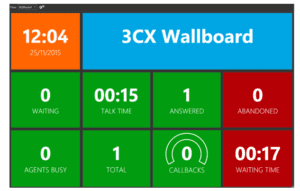
3CX Wall Board
So, sit down, think about each department in your business, work out what constitutes a good day for each department. Then try to translate this into what you think might happen if the teams made more calls? Might you win more business? Might your customers be more happy?
Once you’ve worked out what Indicators you need to look at, you can then inform your Telecoms team (internal or external) what data you’d like out, in order for them to pull the correct reports if the system is capable of delivering them through an analytics solution. Your handover to them should include;
- What data do I need at the company level? For example, total number of calls received, total number of calls made, number of missed calls inbound and number of unanswered calls outbound.
- What data do you need at the team level? For example in your service delivery teams you might want all of the data from the company level PLUS want to know the total talk time or average time to answer a call.
- What data do you need at the individual staff member level? For example you might want to know how much each individual has contributed to the overall team performance – i.e. Joe Bloggs answered 30% of our inbound calls but made 0 outbound calls.
Which telephone systems provide the best call analytics data?
That’s a very difficult question to answer. Most notably because every business is different and has different goals. However, most of the more modern telephone systems can provide all of the data you’ll need, either natively from the telephone system itself OR via a plugin. Our chosen telephone system is the popular 3CX Platform, known for its excellent call performance. It offers a lot of call data straight out of the box. Digital ad tools can also be integrated to leverage call analytics data for better advertising strategies. If your business requires more than other companies, it can also work with the excellent VoIP Tools add-ons to give some uplift in functionality and improved data.
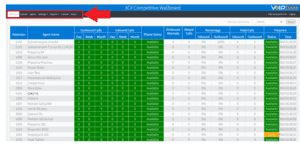
3CX Competitive Wallboard
As part of your research into telephone systems that will work for your business, you should really consider getting the opinions of your team. What call reporting features do they feel are important to allow you to help them improve their value to your business? There’s a high-chance that different departments within your organisation will give you ideas that you hadn’t even thought about!
Summary Benefits of Call Analytics
In conclusion, there are many, many things to think about when producing call reporting and analytics. It can sometimes feel a little daunting on your own. If you need help comparing systems or working out what data it is that you should extract, drop us a line via the contact page here or call us on 01142203000. Digital Exchange have been installing and configuring telephone systems for businesses in Sheffield and across the UK for over 20 years. Talk to our experts about how we might be able to help you to improve your business today!

